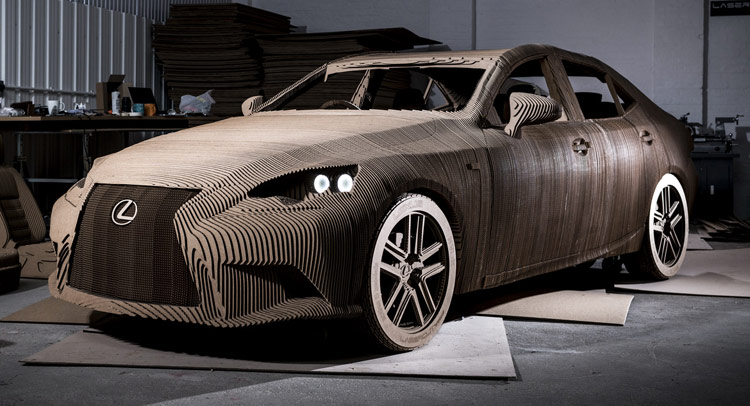Turns out, we were right to think that Lexus’ latest design language has a certain affinity to Origami, the Japanese art of paper folding.
Lexus is taking this affinity to the extremes with the Origami Car, a faithful replica of the new IS saloon made almost entirely out of cardboard, though, according to the carmaker, the idea behind it, was to celebrate “the human craftsmanship skills that go into every car” it makes.
The Japanese brand elaborates: “The skilled men and women – known as takumi – who work on the Lexus production lines hone their dexterity skills by learning how to fold paper into a origami model cat, using only their non-dominant hand. The Origami Car takes the spirit of this talent to a far higher level, while also embracing the spirit of Lexus’s Creating Amazing global brand campaign.”
Nevertheless, it wasn’t Lexus itself that executed the concept, but LaserCut Works and Scales and Models, two London-based specialist companies with experience in design and creation of prototypes, architectural models and bespoke commissions.
What they did was to create a virtual 3D model of the existing Lexus IS sedan, which was then digitally sliced up into a series of primary parts, such as the body, dashboard, seats and wheels. These parts were then laser cut on 1,700 sheets of two-dimensional, 10mm-thick cardboard that were layered together with a water-based glue that required 10 minutes to dry after each application. If you do the math, that’s 283.3 hours or nearly 12 days only between applications, so it’s no wonder that the project took three months to build.
The designers placed the layered Origami cardboard car that comes with a fully fitted interior, functioning doors, headlights and rolling wheels, on a steel and aluminum frame, which features hidden wheels powered by an electric motor.
If you want to see the Lexus Origami Car up close, it will make its public debut at the Grand Designs Live Show at the NEC in Birmingham, on October 8, 2015.




































